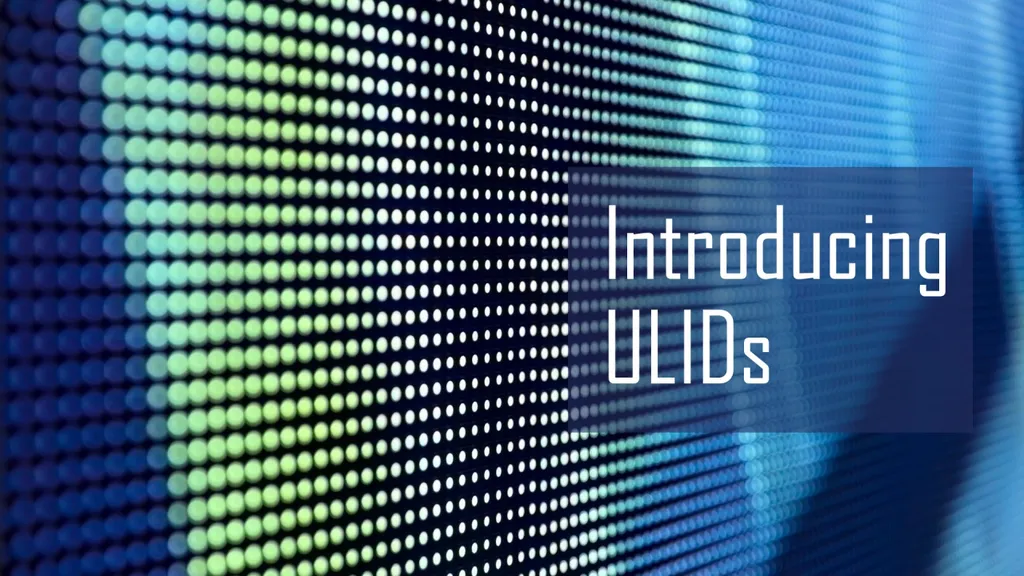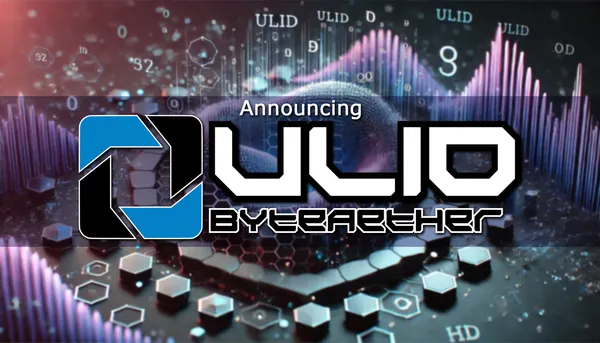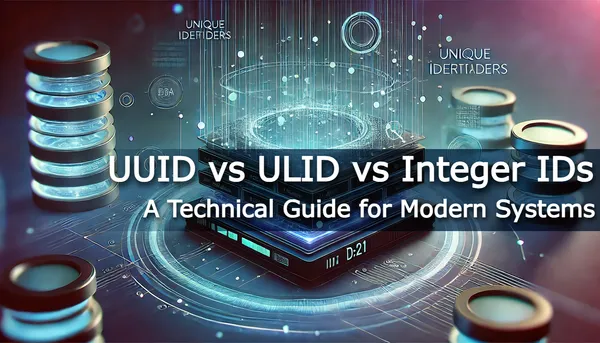
An Introduction to ULIDs: A Modern Identifier for Software Systems
In the world of software development, identifiers are a cornerstone of data storage and retrieval. Whether you are designing a database, an API, or a distributed system, choosing the right identifier scheme is critical to ensuring performance, scalability, and reliability. Two widely used options are auto-incrementing integers and UUIDs (Universally Unique Identifiers). While each has its strengths, they also come with significant trade-offs. ULIDs (Universally Unique Lexicographically Sortable Identifiers) have emerged as a modern alternative that combines the best of both worlds. This article introduces ULIDs by first exploring the strengths and limitations of traditional identifier schemes and then delving into the advantages of ULIDs.
The Strengths and Limitations of Auto-Incrementing Integers
Auto-incrementing integers have been a staple in relational databases for decades. They are simple to implement, easy to understand, and offer excellent performance in single-node systems. With each new row, the database generates a unique, sequential integer that serves as the primary key. This approach ensures:
- Predictable Order: The sequential nature of integers makes data easy to read and maintain.
- Compact Storage: Integers require minimal storage space and are efficiently indexed.
- Fast Operations: Range queries and lookups based on integers are highly optimized.
However, this simplicity comes at a cost when dealing with distributed systems or high-scale applications:
- Centralized Coordination: Generating sequential integers requires a single point of coordination, which can become a bottleneck in distributed systems.
- Scalability Challenges: As the system grows, maintaining a central source of truth for generating identifiers becomes increasingly complex.
- Collision Risk: Without central coordination, ensuring uniqueness across nodes is impossible.
UUIDs: Strengths and Weaknesses
UUIDs were designed to address the distributed nature of modern systems. By using a combination of time, machine identifiers, and random numbers, UUIDs provide globally unique identifiers without requiring central coordination. Their advantages include:
- Global Uniqueness: UUIDs ensure that identifiers generated on different machines or systems will never collide.
- Distributed Scalability: Nodes can independently generate identifiers, eliminating the need for centralized coordination.
- Standardization: UUIDs have a well-defined format and are supported across many programming languages and frameworks.
However, the randomness inherent in UUIDs introduces its own set of challenges:
- Index Fragmentation: UUIDs are effectively random, causing data to be scattered across database indexes. This leads to poor write performance and increased storage overhead.
- Human Unreadability: UUIDs are long and complex, making them difficult to read or debug.
- Inefficient Range Queries: UUIDs lack temporal ordering, complicating queries that rely on time-based filtering.
Introducing ULIDs: The Best of Both Worlds
ULIDs were designed to overcome the limitations of both auto-incrementing integers and UUIDs. By combining a 48-bit timestamp with an 80-bit random component, ULIDs achieve:
- Global Uniqueness: Like UUIDs, ULIDs are unique across distributed systems.
- Temporal Ordering: The timestamp ensures that ULIDs are lexicographically sortable, preserving the chronological order of creation.
- Distributed Generation: ULIDs can be generated independently without requiring central coordination.
- Human Readability: ULIDs use Crockford's Base32 encoding, which avoids ambiguous characters and makes the identifier more readable as a string.
The official ULID specification, available on GitHub, provides detailed guidelines for implementing ULIDs in various programming languages.
The Role of Crockford's Base32 Encoding
A key feature of ULIDs is their use of Crockford's Base32 encoding, which is designed to enhance human readability. This encoding scheme avoids visually similar characters, such as "I" and "1" or "O" and "0," reducing the chance of errors when reading or transcribing ULIDs. Additionally, Base32-encoded ULIDs are case-insensitive, making them easier to handle in systems that do not preserve case.
By encoding ULIDs in Base32, developers can work with identifiers that are compact, consistent, and user-friendly, bridging the gap between machine efficiency and human usability.
Monotonicity: Preserving Order in High-Throughput Systems
ULIDs also address a unique challenge in high-throughput systems: ensuring that identifiers remain ordered even when multiple are generated within the same millisecond. The monotonicity feature of ULIDs guarantees that if multiple ULIDs share the same timestamp, they are incremented to maintain their lexicographical order. This ensures:
- Consistency: Data remains ordered, even under high-concurrency scenarios.
- Query Efficiency: Time-based range queries continue to perform well, regardless of the volume of data generated.
- Reliable Sorting: Applications that rely on ordered identifiers, such as event streams or analytics platforms, benefit from monotonicity.
Why ULIDs Matter for Modern Applications
ULIDs are particularly well-suited for applications that require scalability, temporal ordering, and distributed generation. Use cases include:
- Event Logging: Ensures efficient storage and retrieval of time-stamped log entries.
- Distributed Databases: Eliminates the need for central coordination while preserving order.
- Analytics and Reporting: Facilitates time-based filtering and aggregation of data.
- High-Throughput Systems: Maintains performance and order even under heavy write loads.
Implementing ULIDs in Practice
For developers looking to adopt ULIDs, a variety of libraries are available across programming languages. In particular, the ByteAether's Ulid GitHub repository offers a high-performance C# implementation.
By following the official specification and leveraging well-maintained libraries, developers can integrate ULIDs into their systems with minimal effort and maximum reliability.
Conclusion
ULIDs offer a modern, versatile solution to the challenges of identifier generation in software systems. By combining the benefits of auto-incrementing integers and UUIDs while avoiding their pitfalls, ULIDs provide a unique identifier scheme that is globally unique, lexicographically sortable, and human-readable. With features like Crockford's Base32 encoding and monotonicity, ULIDs are tailored for the demands of modern applications, from distributed systems to time-based analytics.
Whether you are building a new system or optimizing an existing one, ULIDs represent a compelling option for identifier management. With their growing ecosystem of libraries and strong community support, they are poised to become a standard choice for developers seeking scalability, performance, and simplicity.
Start integrating ULIDs into your .NET applications today with ByteAether.Ulid. Let us know your thoughts and feedback—we’re excited to see what you build!

